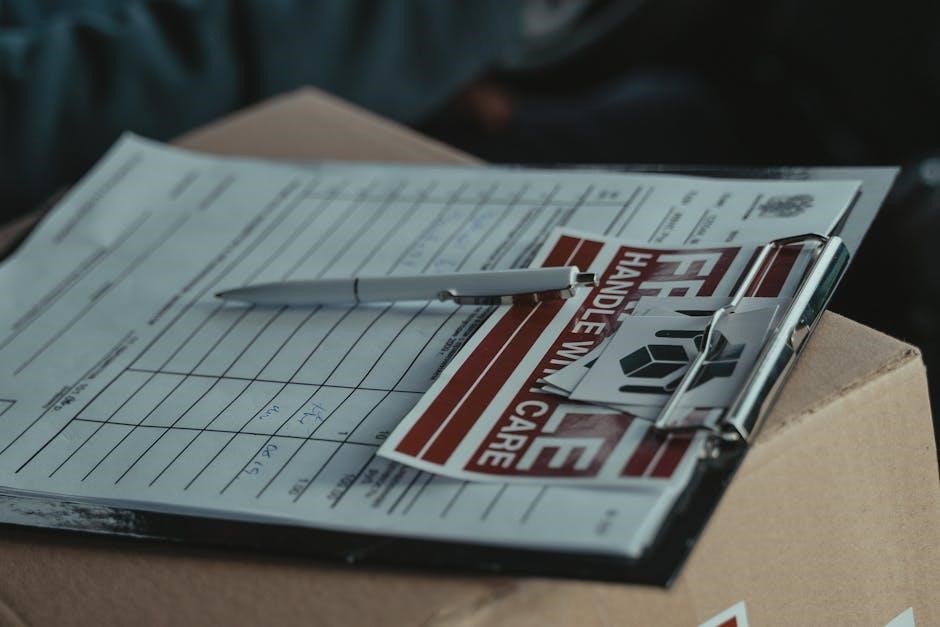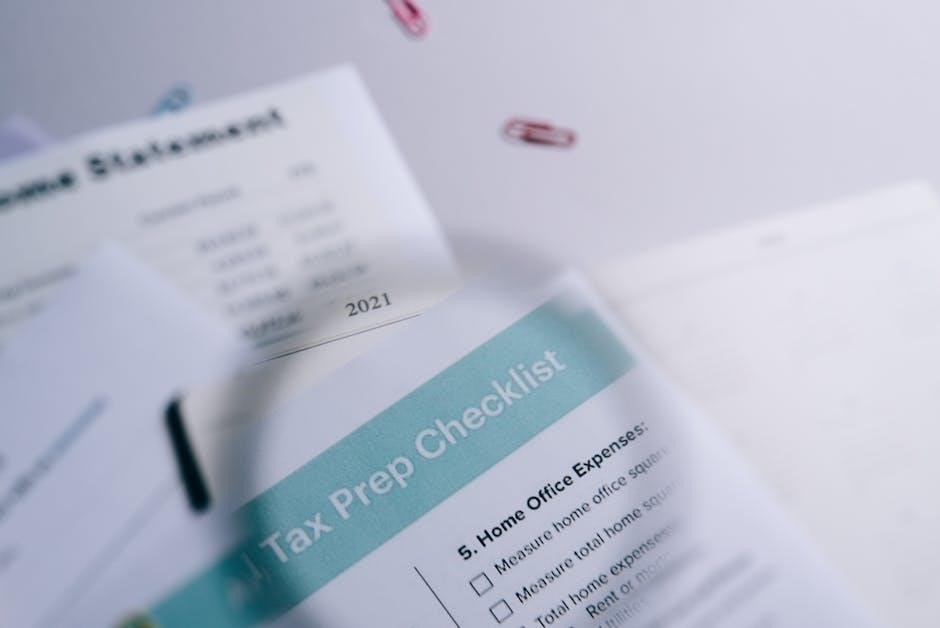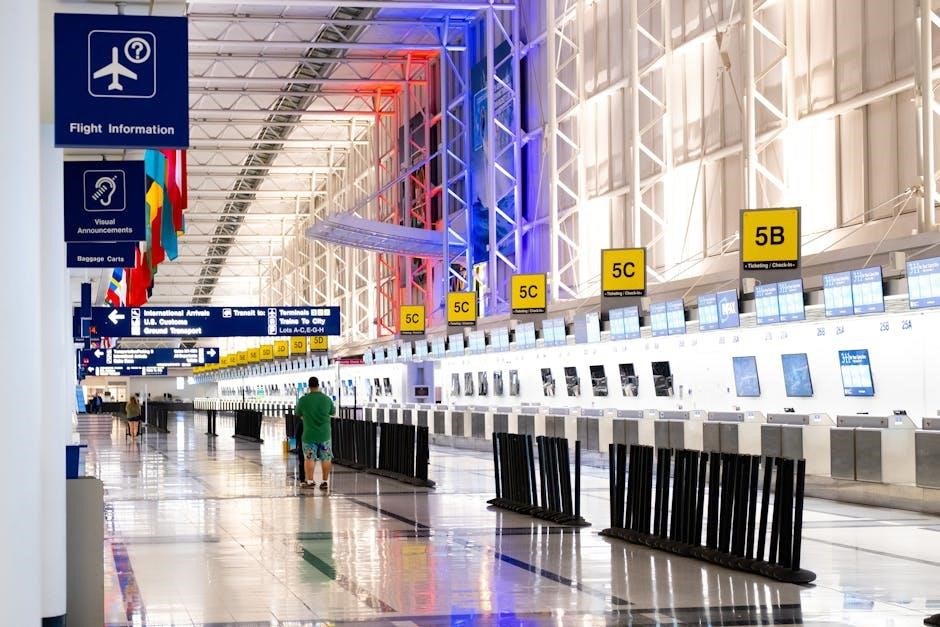Welcome to the Cessna 172S checklist guide, designed to enhance safety, consistency, and compliance during flight operations. This checklist is tailored for the Cessna 172S model, focusing on its G1000 avionics system. It streamlines procedures from the Pilot’s Operating Handbook (POH) to ensure thorough preparedness for every flight phase, from preflight to shutdown.
1.1 Overview of the Cessna 172S Aircraft
The Cessna 172S is a widely used, single-engine, four-seat aircraft known for its reliability and ease of handling. It features a robust design, advanced avionics, and excellent fuel efficiency, making it a popular choice for flight training and personal aviation. The 172S model includes upgrades such as a fuel-injected engine and modern cockpit systems, enhancing performance and safety for pilots of all experience levels.
1.2 Importance of Using a Checklist in Aviation
Using a checklist in aviation ensures adherence to standardized procedures, minimizing errors and enhancing safety. It helps pilots manage complex tasks efficiently, reducing cognitive load during critical phases of flight. A well-structured checklist, like the Cessna 172S checklist, promotes consistency and compliance with regulations, ultimately reducing risks and improving overall flight safety for both experienced and training pilots.

Preflight Preparation
Preflight preparation involves a thorough exterior inspection, cockpit setup, and fuel/oil checks. It ensures the aircraft is airworthy and ready for safe operation, following the POH guidelines.
2.1 Exterior Inspection
Exterior inspection ensures the aircraft’s external components are in good condition. Check tires for wear, control surfaces for damage, and fluid levels. Verify all lights function properly and inspect for dents or damage. Ensure the propeller is free of nicks and the spinner is secure. Check fuel caps and vents for proper sealing and functionality. Also, ensure that all static ports and Pitot tubes are unobstructed. This step is crucial for identifying any potential issues before flight, ensuring safety and compliance with regulations.
2.2 Interior Cockpit Setup
Begin by adjusting and locking the pilot’s seat and ensuring all seatbelts are securely fastened. Power on the avionics bus and master switch, then perform a G1000 system check. Set the altimeter to the current airport elevation and verify all primary flight instruments are functioning. Ensure the comms radio is set to the appropriate frequency and configure the GPS for navigation. Finally, complete a passenger briefing and secure all loose items in the cockpit.
2.3 Fuel and Oil Checks
Check the fuel quantity visually and ensure fuel caps are secure and tight. Verify the oil level using the dipstick, adding oil if necessary. Confirm the oil type matches the aircraft’s specifications and inspect the oil filter for any signs of damage or leaks. Ensure no contaminants are present in the fuel or oil systems. Record all findings and address any discrepancies before proceeding with the flight.

Startup and Taxi Procedures
This section outlines the steps for starting the engine, conducting initial systems checks, and preparing for safe taxiing, ensuring all systems are functioning properly before movement.
3.1 Engine Start and Initial Systems Check
Begin with pre-start checks: ensure the brakes are set, throttle is idle, and mixture is lean. Prime the engine as needed, then engage the starter. Monitor oil pressure and RPM during startup. After engine start, check the magnetos, fuel pump, and electrical systems. Verify avionics and navigation equipment functionality, including the G1000 system. Ensure all warning lights and alarms are inactive before proceeding to taxi.
3.2 Taxiing and Ground Movement
After engine start, complete the taxi checklist: test brakes, ensure lights are on, and set flaps as needed. Use taxiway diagrams to navigate ground routes, maintaining situational awareness. Communicate clearly with ATC or ground personnel for taxi instructions. Avoid sudden movements; steer gently using nosewheel steering or rudder. Keep the aircraft aligned with centerlines to prevent deviations. Ensure all systems remain operational during ground movement.

Climb and Cruise Procedures
Configure for climb: flaps up, power to 75%, and pitch for 79 KIAS. Level off smoothly, adjusting pitch and power to maintain altitude and enter cruise mode.
4.1 Climb Configuration and Speeds
Establish climb configuration by retracting flaps fully and setting power to 75% RPM. Maintain a steady pitch attitude for 79 KIAS, optimizing climb performance. Monitor altitude and adjust as needed. Ensure smooth transitions and maintain situational awareness throughout the climb phase for a safe and efficient ascent to cruising altitude.
4.2 Level Off and Cruise Settings
Upon reaching cruising altitude, reduce power to 65% RPM for optimal fuel efficiency. Set airspeed to 120 KIAS and adjust pitch attitude as needed; Trim the aircraft to relieve control pressures. Monitor fuel flow and adjust the mixture for maximum efficiency. Ensure navigation systems are updated and altimeter settings are current; Maintain situational awareness and adjust heading or altitude as required for a smooth, efficient cruise.

Descent and Landing
This section outlines procedures for descending and landing safely, including configuring flaps, setting appropriate airspeeds, and using G1000 for precision navigation.
5.1 Configuring for Descent
Start descent by reducing power to 1700 RPM and configuring flaps at 10 degrees. Adjust pitch to maintain 70 KIAS, optimizing for a stable descent. Ensure avionics are set for the destination airport, and monitor altitude and airspeed closely. Gradually lower flaps as needed, and adjust pitch and power to maintain approach speed. Level off smoothly at the desired altitude, and apply carburetor heat if icing conditions exist.
5.2 Landing Checklist and Flare
Configure for landing with flaps at 30 or 40 degrees, maintaining 65 KIAS. Lower the landing gear and ensure all lights and instruments indicate proper operation. Line up with the runway centerline, reduce power to idle, and begin the flare by gently pulling back on the yoke. Touch down smoothly, applying brakes as needed, and taxi clear of the runway.

Emergency Procedures
In case of engine failure, maintain 65 KIAS with flaps up. Declare an emergency, secure the engine, and prepare for landing. Stay calm and follow checklist procedures precisely to ensure safe outcomes.
6.1 Engine Failure During Takeoff
If engine failure occurs during takeoff, immediately maintain 70 KIAS with flaps up. Secure the engine, declare an emergency, and configure flaps as needed for landing. Prioritize a safe landing site, keeping the aircraft under control. Follow the checklist procedures precisely to handle the situation effectively and minimize risks.
6.2 Engine Failure in Flight
In the event of engine failure during flight, maintain 65 KIAS with flaps up or 60 KIAS with flaps down. Engage carburetor heat and secure the engine. Declare an emergency and prepare for an immediate landing. Follow the checklist to ensure all critical steps are executed, prioritizing aircraft control and passenger safety. Always reference the POH for specific procedures.
Post-Flight Shutdown
Secure the aircraft by setting the parking brake, shutting off the engine, and engaging the master switch. Conduct a post-flight inspection to ensure all systems are safe and properly configured for storage.
7.1 Securing the Aircraft
After landing, engage the parking brake and set the flaps as required; Shut down the engine, toggle off the avionics, and ensure all switches are in the off position. Secure the cabin door and perform a visual walk-around to verify all surfaces are clear of debris. This ensures the aircraft is safe and ready for the next flight.
7.2 Post-Flight Inspection
After securing the aircraft, perform a detailed post-flight inspection to ensure everything is in order. Check control surfaces for damage, verify control locks are in place, and confirm tie-downs are secure. Inspect tires, brakes, and fluid levels, and clean the windshield and exterior. This routine ensures the aircraft remains airworthy and ready for the next flight while addressing any potential maintenance issues early.

G1000 Avionics-Specific Checklist
The G1000 avionics system in the Cessna 172S streamlines flight operations with advanced navigation tools. This section covers startup procedures, system checks, and configuration for optimal performance during flight.
8.1 G1000 Startup and Configuration
Power on the avionics bus and perform a system self-test. Configure the primary flight display (PFD) and multi-function display (MFD) for flight. Set COM and NAV radios, enter flight plan, and initialize GPS. Ensure all sensors are active and altimeter settings are correct. Verify software version and complete pre-flight checks for optimal G1000 performance.
8.2 Using G1000 for Navigation
Enter the flight plan using the MFD, ensuring waypoints and altitudes are correctly set. Engage the autopilot for altitude and heading control. Monitor GPS status, cross-check with VOR and localizer signals; Use the “Nearest Airports” feature for diversions. Configure approach procedures, including ILS and GPS approaches. Continuously verify navigation data accuracy and adjust as needed for smooth, precise flight routing.
Pilot’s Operating Handbook (POH) Reference
The POH is the primary source for aircraft-specific data, including performance, limitations, and normal/emergency procedures. It provides detailed guidance for safe and efficient operation of the Cessna 172S;
9.1 Key Sections of the POH
The POH contains essential sections like Limitations, detailing maximum speeds and weights, and Normal Procedures, covering startup, taxi, takeoff, and landing. The Performance section provides crucial data for climb, cruise, and descent, ensuring optimal aircraft operation. Emergency Procedures outline responses to critical scenarios, while System Descriptions explain aircraft components’ functions, aiding in troubleshooting and maintenance decisions.
9.2 Integrating POH with the Checklist
Integrating the POH with the checklist ensures comprehensive compliance with aircraft-specific procedures. The POH provides detailed explanations, while the checklist offers a concise, step-by-step guide. Both tools complement each other, with the POH serving as the foundation for understanding procedures and the checklist streamlining execution. This integration enhances safety, efficiency, and adherence to manufacturer guidelines during pre-flight, flight, and post-flight operations.
Customizing the Checklist
Customizing the Cessna 172S checklist allows pilots to tailor procedures to their preferences while maintaining safety and compliance with the aircraft’s official guidelines. Personal touches enhance usability without compromising standards.
10.1 Tailoring the Checklist to Pilot Needs
Pilots can modify the Cessna 172S checklist to fit their individual flying styles and mission requirements. This customization ensures that each step is relevant and efficient, reducing distractions during critical phases of flight. By integrating personal preferences and frequently used procedures, the checklist becomes a more effective tool for enhancing safety and operational consistency.
10.2 Ensuring Compliance with Regulations
The Cessna 172S checklist must align with FAA guidelines and aircraft-specific regulations. Regularly updating the checklist to reflect the latest aviation standards ensures compliance. Pilots should cross-reference the POH and incorporate any regulatory changes to maintain legal and safe operations, avoiding potential violations and ensuring adherence to mandated procedures.
The Cessna 172S checklist is essential for safe and efficient flight operations, ensuring consistency and compliance with aviation standards. Regular use enhances overall safety and performance.
11.1 Summary of the Checklist’s Role
The Cessna 172S checklist ensures adherence to standardized procedures, promoting flight safety and efficiency. It covers preflight, startup, taxi, takeoff, climb, cruise, descent, landing, and shutdown processes. By following this structured guide, pilots minimize errors and ensure compliance with aviation regulations. The checklist serves as a training tool and reference, guiding pilots through all phases of flight while reinforcing habits that enhance safety and performance.
11.2 Final Tips for Effective Checklist Use
Consistently use the checklist during every flight phase to ensure thoroughness and safety. Commit critical procedures to memory while following the checklist to avoid reliance on it during high-stress situations. Regularly review and update your checklist to reflect aircraft-specific updates or regulatory changes. Customize it to suit your flying style while maintaining compliance with aviation standards. These habits will enhance your safety and efficiency in the skies.

Additional Resources
Find the official Cessna 172S checklist PDF on Cessna’s website or through authorized aviation training centers. Supplementary guides and detailed flight manuals are also available for further reference.
12.1 Where to Find the Official Cessna 172S Checklist PDF
The official Cessna 172S checklist PDF can be accessed through Cessna’s official website or authorized aviation training centers. Additionally, flight schools and aircraft maintenance organizations often provide this document. Pilots can also find it in the Pilot’s Operating Handbook (POH) specific to the G1000-equipped model. Always ensure the checklist is up-to-date and compliant with current aviation regulations for safe and efficient flight operations.
12.2 Recommended Supplements and Guides
Supplement your Cessna 172S checklist with the Pilot’s Operating Handbook (POH) and Aircraft Flight Manual (AFM). Additional resources include aviation training manuals, FAA safety briefings, and electronic flight bag (EFB) guides. Online forums and flight school materials also offer valuable insights. These supplements enhance understanding and compliance with aircraft-specific procedures, ensuring a safer and more efficient flight experience for pilots of all levels.
